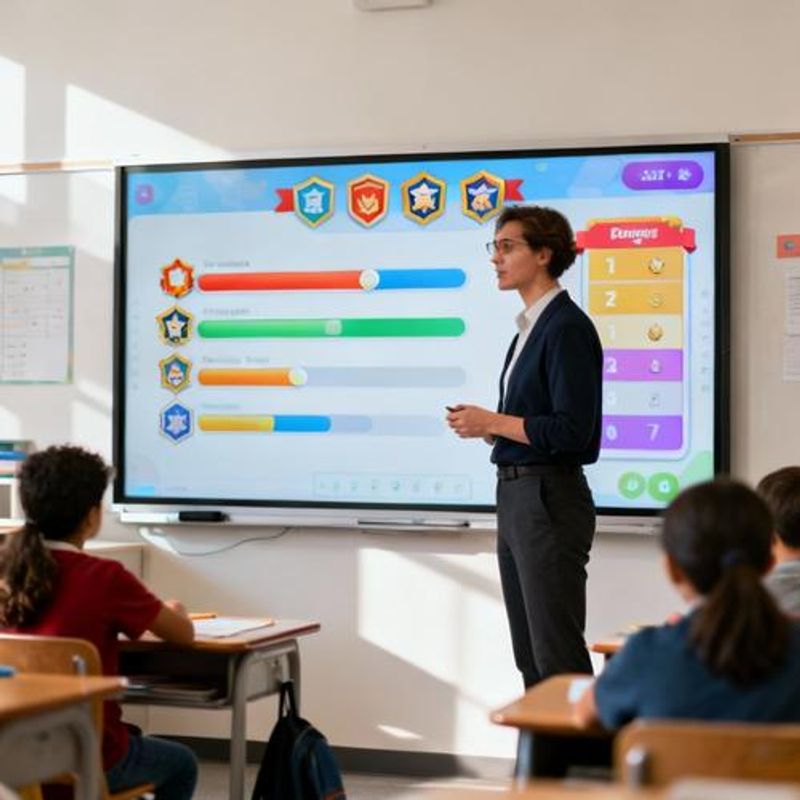The Complete Guide to Gamification in Education: Transforming Learning Outcomes Through Game-Based Strategies

As an educator navigating the evolving landscape of student engagement, you've likely witnessed the challenge of maintaining attention spans in an increasingly digital world. This comprehensive guide reveals how gamification in education can transform your classroom dynamics, boost learning outcomes by up to 90%, and re-energize both your teaching approach and student participation. Whether you're implementing your first gamified lesson or scaling existing initiatives, you'll discover evidence-based strategies, practical tools, and proven frameworks that work across all grade levels and subjects.

Why Gamification in Education Matters More Than Ever
Educational institutions worldwide face unprecedented challenges in student engagement and learning retention. Traditional lecture-based approaches increasingly fall short of capturing students' attention, while digital distractions compete for cognitive resources. Gamification in education addresses these pain points by leveraging the psychological principles that make games inherently engaging: clear goals, immediate feedback, progressive challenges, and meaningful rewards. For forward-thinking educators, understanding and implementing these principles isn't just beneficial—it's becoming essential for effective teaching in the 21st century.
Key Takeaways: What You'll Achieve With Educational Gamification
Before diving into implementation details, here are the core benefits you can expect when properly applying gamification in education:
- Increased student engagement rates by 60-90% across diverse learning environments
- Enhanced knowledge retention through spaced repetition and achievement-based learning
- Improved intrinsic motivation by transforming learning from obligation to exploration
- Data-driven insights into individual learning patterns and progress tracking
- Scalable frameworks that work across subjects, from mathematics to language arts

The Four Pillars of Effective Educational Gamification
Successful gamification in education rests on four foundational principles that distinguish meaningful implementation from superficial 'point-and-badge' systems. First, **Progressive Challenge Design** ensures that difficulty curves match individual learning paces, preventing both boredom and overwhelming complexity. Students advance through carefully calibrated levels that build confidence while maintaining appropriate challenge. Second, **Meaningful Choice Architecture** empowers learners to select their learning paths, fostering autonomy and personal investment in outcomes. Third, **Social Learning Integration** leverages collaboration and healthy competition to create community-driven educational experiences. Finally, **Immediate Feedback Loops** provide real-time assessment and course correction, eliminating the traditional delay between action and consequence that often diminishes learning effectiveness.
Practical Implementation Framework: From Concept to Classroom
Begin with **Learning Objective Mapping**: identify 3-5 core competencies you want students to master, then design game mechanics that naturally reinforce these skills. For mathematics, this might involve puzzle-solving quests where algebraic thinking unlocks new territories. For literature, character-driven narratives where students' analytical insights determine story progression. Next, establish **Progress Visualization Systems** using tools like ClassDojo, Kahoot!, or Classcraft, ensuring that advancement feels tangible and meaningful. Implement **Collaborative Challenges** where teams tackle complex problems, fostering peer-to-peer learning while maintaining individual accountability. Finally, create **Reflection Checkpoints** where students analyze their learning journey, connecting game achievements to real-world skill development.
Ready-to-Use Templates and Tools
**Digital Platforms**: Duolingo for Education offers language learning with built-in gamification, while platforms like Minecraft Education Edition provide immersive problem-solving environments. **Assessment Gamification**: Transform traditional quizzes using Gimkit or Blooket, where correct answers generate in-game currency for strategic decisions. **Behavior Management**: Implement ClassDojo's point system for positive reinforcement, or create custom achievement badges using Canva templates. **Project-Based Challenges**: Design escape room scenarios where students solve curriculum-based puzzles to 'escape,' combining critical thinking with collaborative problem-solving. **Progress Tracking**: Use Google Sheets templates with automated progress bars and achievement tracking, providing transparent advancement visualization for both students and parents.

Avoiding Common Gamification Pitfalls
**Over-reliance on Extrinsic Rewards**: While points and badges create initial excitement, they can undermine intrinsic motivation if not carefully balanced with meaningful learning objectives. Focus on competency-based achievements rather than participation trophies. **Ignoring Learning Differences**: Universal gamification approaches often fail students with different learning styles or attention challenges. Provide multiple pathways to success and allow opt-out options for students who find competitive elements stressful. **Technology Dependency**: Effective gamification doesn't require expensive digital tools. Paper-based achievement systems, classroom role-playing, and analog progress tracking can be equally effective. **Neglecting Assessment Alignment**: Ensure that gamified activities directly support measurable learning outcomes rather than serving as entertaining distractions from core curriculum goals.
Your Next Steps: Building Sustainable Gamified Learning
Start small with one subject or unit, implementing a single gamification element like progress tracking or achievement badges. Measure student engagement and learning outcomes over 4-6 weeks, then gradually expand successful elements while refining or removing ineffective components. Consider joining professional learning communities focused on educational technology and gamification to share experiences and discover new strategies. Document your implementation process and student feedback—this data becomes invaluable for scaling successful approaches across your entire curriculum. Remember, the most effective gamification in education feels seamless and natural, enhancing rather than replacing good pedagogical practices.